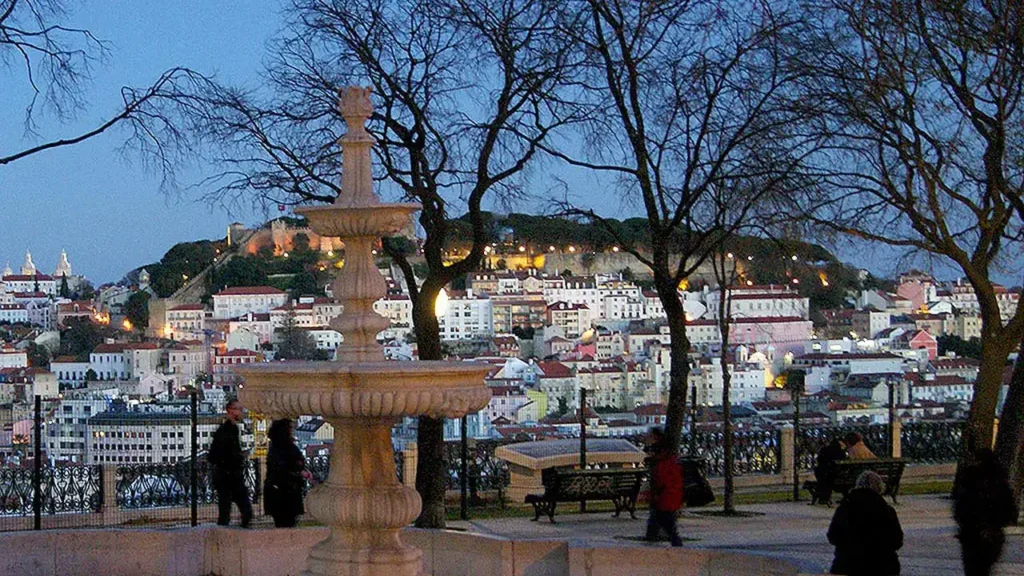Original article published on 18 November 2020
São Pedro de Alcântara Garden is very well-known by those who visit Lisbon. No one wants to miss the wide panorama between Eduardo VII Park and the Tagus river that can be seen from there.
Located in the axis Amoreiras/Chiado, right further down Príncipe Real Garden, this rectangular-shaped garden, constituted by two uneven levels, offers other reasons to visit it in addition to the beautiful view.
Let’s find out!
Get to know Lisbon’s historic neighbourhoods in a guided tour and discover unmissable places of this magnificent city.
Brief Origin
The origin of this place goes back to the 19th century when a square started to be built in front of the Convent of São Pedro de Alcântara, which had been built in the last quarter of the previous century.
King João V intended on prolonging the Águas Livres Aqueduct and building a large Mãe d’Água Reservoir here in order to supply the east side of the city. Construction work was even started and a wall with around 20 metres of height was built, which now serves as support for this space.
However, the violent earthquake of 1755 set other priorities.
Only after the civil war (1832-34), with the victory of Liberalism and the new competences of the City Council of Lisbon, did this space, until then an abandoned wasteland, begin to take on the shape of a garden.
São Pedro de Alcântara Garden
This garden consists of two levels: an upper level bounded on the west side by Rua de São Pedro de Alcântara, the artery through which the route 24 of the Lisbon trams passes; and on the east side by a balcony composed by a beautiful iron railing.
The balcony has on each top two gates, dating from 1839, which give access to stone staircases that lead us to the lower level which, in turn, is a balcony over Rua das Taipas.


Lower Level
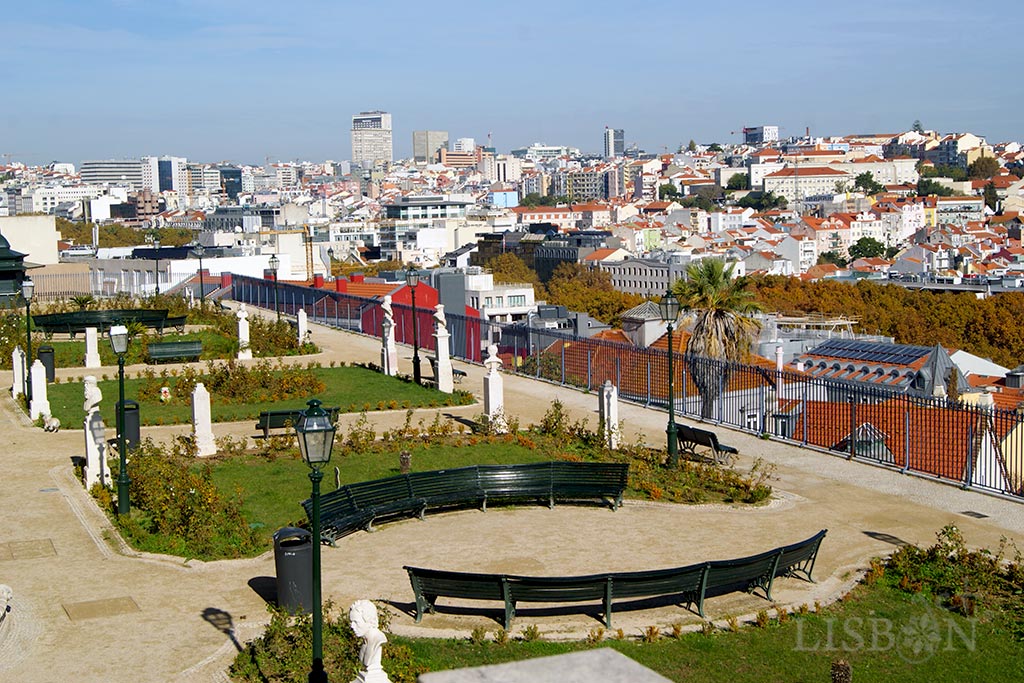
Here you can find a French-style garden with columns supporting busts from historical, national and ancient personalities, as well as characters from classical mythology.
This space used to have a different appearance and has many curious facts that we’ll tell you about on another occasion.
Also read Iron Fountains of the 19th Century where we talk about a fountain that was on this lower level of the São Pedro de Alcântara Garden.
Upper Level
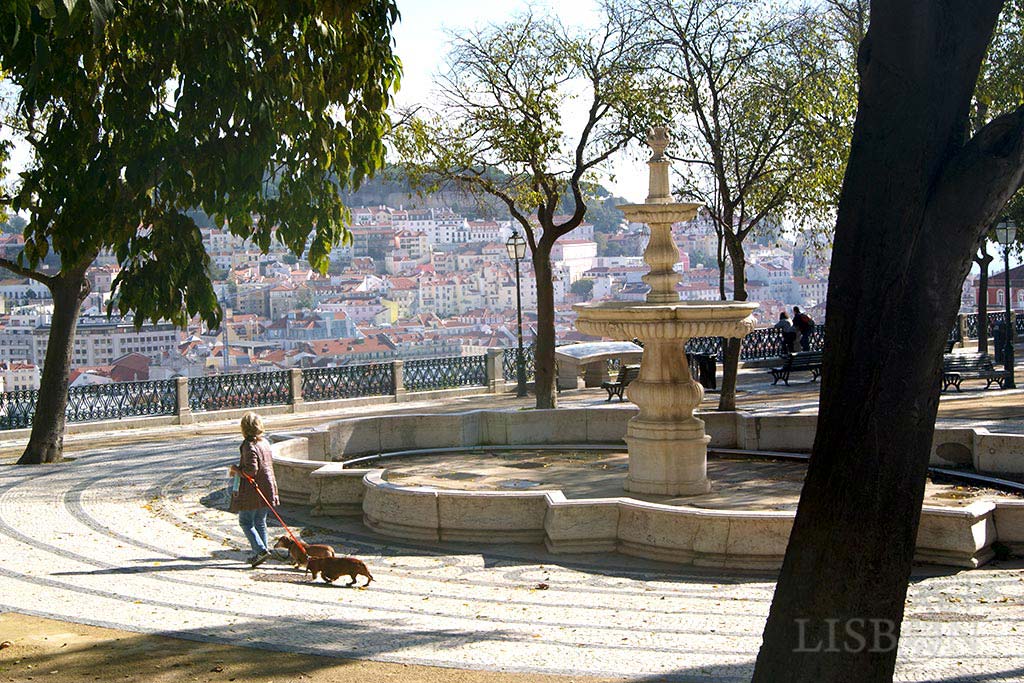
The upper level is characterised by the presence of large trees, most of which are European nettle trees (celtis australis), which can be found on the sides of squares with benches.
It is here that we can find several elements that deserve your attention.
Baroque Fountain

The oldest piece in São Pedro de Alcântara Garden comes from the gardens of Bemposta Palace, in Santana Hill.
It’s a baroque ornamental fountain, composed of a large polylobed lake and a column with complex decoration, which supports two basins. Each one presents four figureheads, which are spouts.
Portuguese Pavement of São Pedro de Alcântara Garden

Along the entire length of this part of the garden, there are beautiful decorative patterns of Portuguese pavement, the result of works from different periods.
One of its oldest examples surrounds the railing. This is proven not only by the date inscribed there, 1876, but also by the small size of the stones that compose it.
Notice as well the countless small motifs, hidden among the patterns, that are curious secrets in the Portuguese pavement. Plus, the magnificent ornaments that surround and complement the monument of tribute to Eduardo Coelho.
Monument of Eduardo Coelho
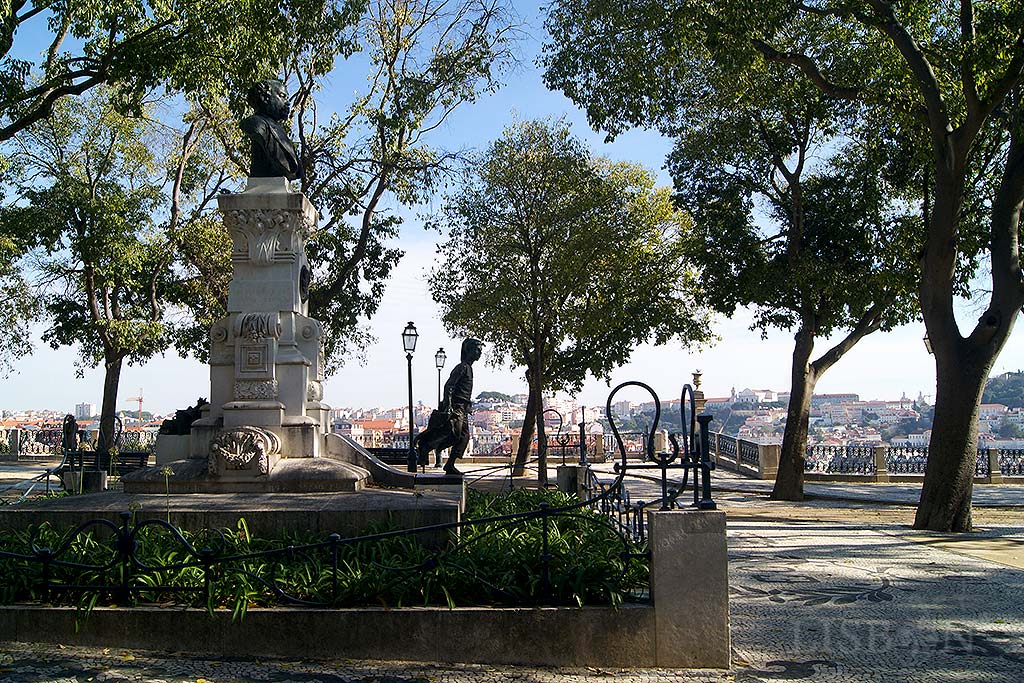
The upper level of the São Pedro de Alcântara Garden only has one sculptural piece. It is a monument of tribute to the journalist founder of Diário de Notícias, Eduardo Coelho.
We highlight the small paperboy, enlivened with movement and energy, as well as the existing harmony between the various elements that make up this set.
A piece that dates from 1904, by the sculptor Costa Motta (Tio), who we’ve talked about in detail in the article we’ve dedicated to him.
Tile Panorama
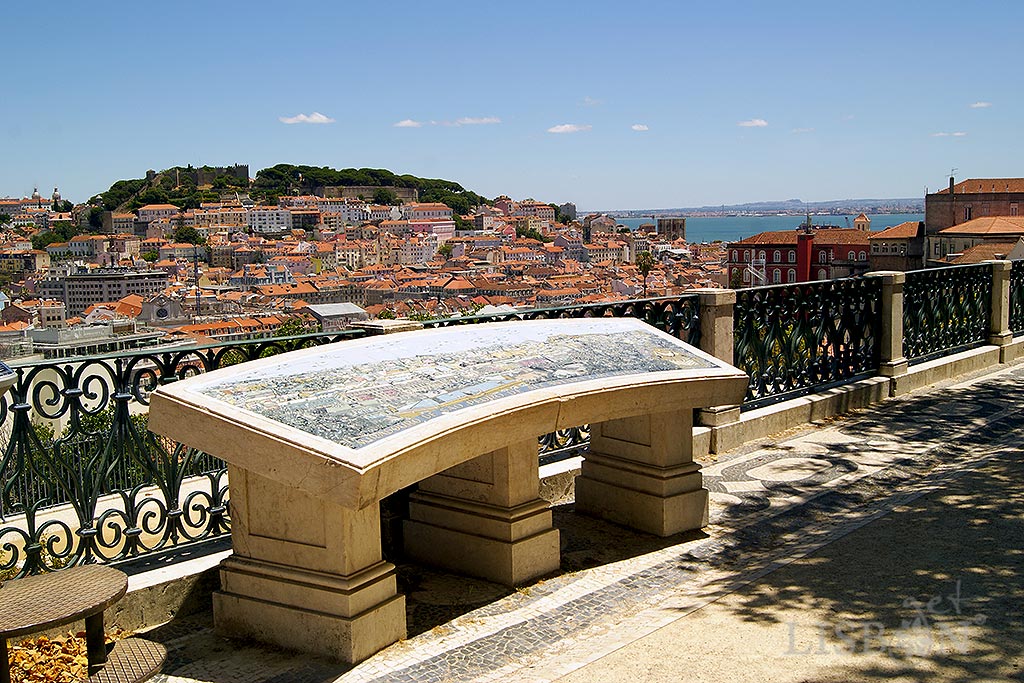
This is a colourful tile panel depicting the panoramic view that can be seen from there and it dates back to 1962. There are several places marked there, such as the Penha de França and Monte Agudo viewpoints, several churches, palaces, monuments and even the Lavra Funicular, among many other landmarks.
This piece was produced by the Viúva Lamego Factory and its author is the Swiss plastic artist Fred Kradolfer (1903-1968), who lived in the peculiar house of the evocative plaques in Bairro Alto.
Toponymic Plaque
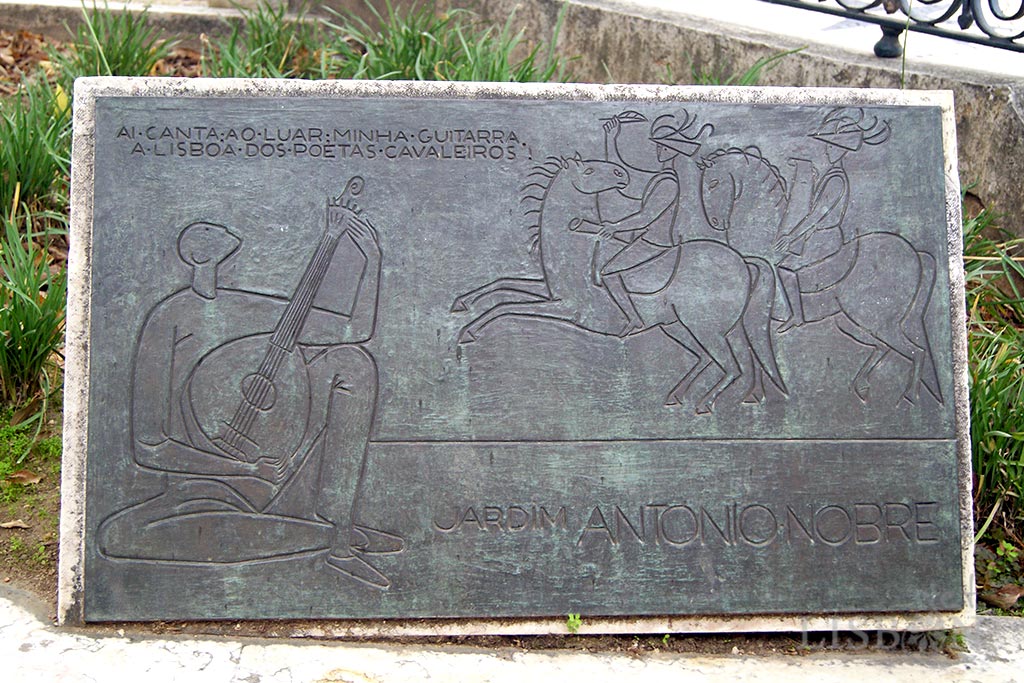
At the south entrance of the garden there’s a toponymic plaque placed on December 27, 1967, for the celebration of the centenary of the birth of António Nobre (1867-1900), the Portuguese poet the garden was named after, even though no one knows it by its name.
On this plaque is engraved an excerpt from a poem he dedicated to Lisbon, as well as an anonymous modernist illustration.
| Never miss another article | Subscribe here |
The Light of São Pedro de Alcântara Garden
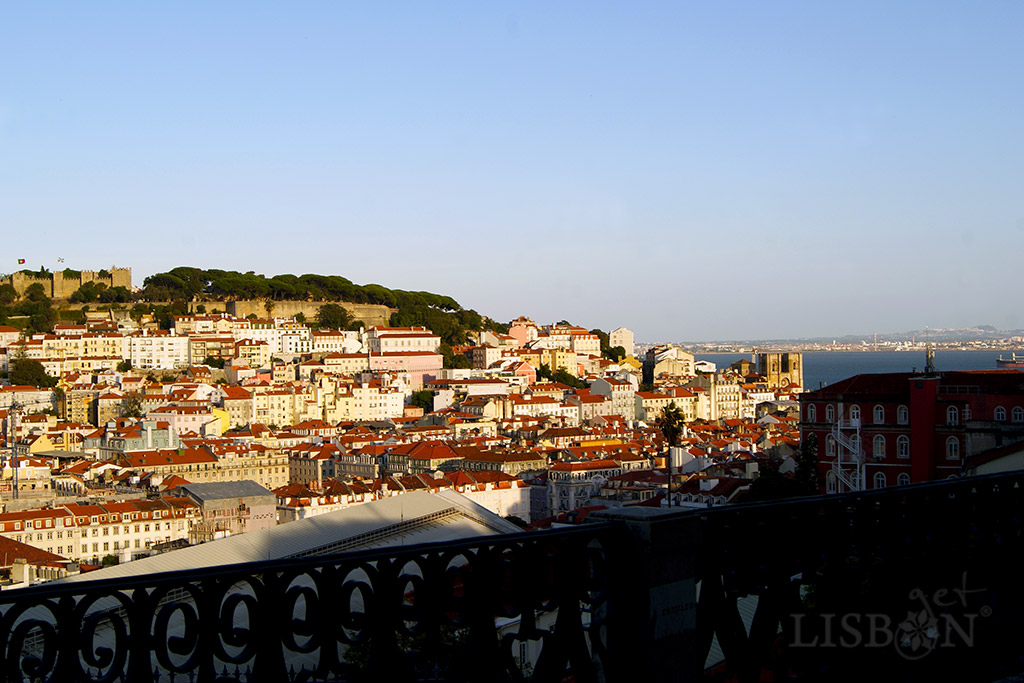
In addition to the artistic elements that make up this admirable space, we cannot fail to emphasise that this is one of the best places to observe the very special light of Lisbon.
If in the morning the light is cruder, the dusk reserves you a true dazzling scenario regardless of the time of year.
The project getLISBON has been very rewarding and we want to continue revealing the singularities of fascinating Lisbon.
Help us keep this project alive!
By using these links to make your reservations you’ll be supporting us. With no extra costs!
• Looking for a different experience? We can create a customised itinerary based on your interests. Contact us!
• Or if you prefer tours and other activities in various destinations, take a look at GetYourGuide.
• Save time and money with a flexible Lisbon Card!

